Bank of America 2012 Annual Report Download - page 199
Download and view the complete annual report
Please find page 199 of the 2012 Bank of America annual report below. You can navigate through the pages in the report by either clicking on the pages listed below, or by using the keyword search tool below to find specific information within the annual report.-
 1
1 -
 2
2 -
 3
3 -
 4
4 -
 5
5 -
 6
6 -
 7
7 -
 8
8 -
 9
9 -
 10
10 -
 11
11 -
 12
12 -
 13
13 -
 14
14 -
 15
15 -
 16
16 -
 17
17 -
 18
18 -
 19
19 -
 20
20 -
 21
21 -
 22
22 -
 23
23 -
 24
24 -
 25
25 -
 26
26 -
 27
27 -
 28
28 -
 29
29 -
 30
30 -
 31
31 -
 32
32 -
 33
33 -
 34
34 -
 35
35 -
 36
36 -
 37
37 -
 38
38 -
 39
39 -
 40
40 -
 41
41 -
 42
42 -
 43
43 -
 44
44 -
 45
45 -
 46
46 -
 47
47 -
 48
48 -
 49
49 -
 50
50 -
 51
51 -
 52
52 -
 53
53 -
 54
54 -
 55
55 -
 56
56 -
 57
57 -
 58
58 -
 59
59 -
 60
60 -
 61
61 -
 62
62 -
 63
63 -
 64
64 -
 65
65 -
 66
66 -
 67
67 -
 68
68 -
 69
69 -
 70
70 -
 71
71 -
 72
72 -
 73
73 -
 74
74 -
 75
75 -
 76
76 -
 77
77 -
 78
78 -
 79
79 -
 80
80 -
 81
81 -
 82
82 -
 83
83 -
 84
84 -
 85
85 -
 86
86 -
 87
87 -
 88
88 -
 89
89 -
 90
90 -
 91
91 -
 92
92 -
 93
93 -
 94
94 -
 95
95 -
 96
96 -
 97
97 -
 98
98 -
 99
99 -
 100
100 -
 101
101 -
 102
102 -
 103
103 -
 104
104 -
 105
105 -
 106
106 -
 107
107 -
 108
108 -
 109
109 -
 110
110 -
 111
111 -
 112
112 -
 113
113 -
 114
114 -
 115
115 -
 116
116 -
 117
117 -
 118
118 -
 119
119 -
 120
120 -
 121
121 -
 122
122 -
 123
123 -
 124
124 -
 125
125 -
 126
126 -
 127
127 -
 128
128 -
 129
129 -
 130
130 -
 131
131 -
 132
132 -
 133
133 -
 134
134 -
 135
135 -
 136
136 -
 137
137 -
 138
138 -
 139
139 -
 140
140 -
 141
141 -
 142
142 -
 143
143 -
 144
144 -
 145
145 -
 146
146 -
 147
147 -
 148
148 -
 149
149 -
 150
150 -
 151
151 -
 152
152 -
 153
153 -
 154
154 -
 155
155 -
 156
156 -
 157
157 -
 158
158 -
 159
159 -
 160
160 -
 161
161 -
 162
162 -
 163
163 -
 164
164 -
 165
165 -
 166
166 -
 167
167 -
 168
168 -
 169
169 -
 170
170 -
 171
171 -
 172
172 -
 173
173 -
 174
174 -
 175
175 -
 176
176 -
 177
177 -
 178
178 -
 179
179 -
 180
180 -
 181
181 -
 182
182 -
 183
183 -
 184
184 -
 185
185 -
 186
186 -
 187
187 -
 188
188 -
 189
189 -
 190
190 -
 191
191 -
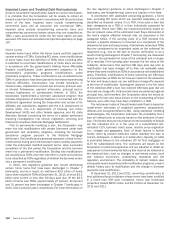 192
192 -
 193
193 -
 194
194 -
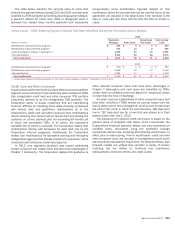 195
195 -
 196
196 -
 197
197 -
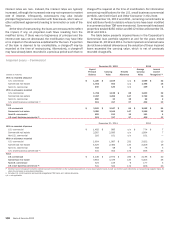 198
198 -
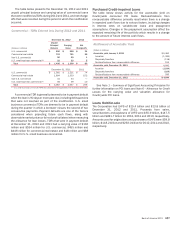 199
199 -
 200
200 -
 201
201 -
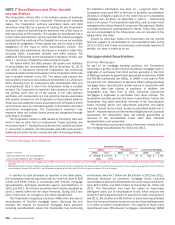 202
202 -
 203
203 -
 204
204 -
 205
205 -
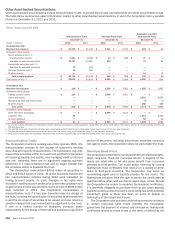 206
206 -
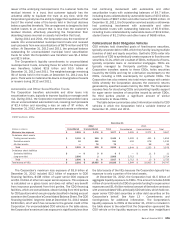 207
207 -
 208
208 -
 209
209 -
 210
210 -
 211
211 -
 212
212 -
 213
213 -
 214
214 -
 215
215 -
 216
216 -
 217
217 -
 218
218 -
 219
219 -
 220
220 -
 221
221 -
 222
222 -
 223
223 -
 224
224 -
 225
225 -
 226
226 -
 227
227 -
 228
228 -
 229
229 -
 230
230 -
 231
231 -
 232
232 -
 233
233 -
 234
234 -
 235
235 -
 236
236 -
 237
237 -
 238
238 -
 239
239 -
 240
240 -
 241
241 -
 242
242 -
 243
243 -
 244
244 -
 245
245 -
 246
246 -
 247
247 -
 248
248 -
 249
249 -
 250
250 -
 251
251 -
 252
252 -
 253
253 -
 254
254 -
 255
255 -
 256
256 -
 257
257 -
 258
258 -
 259
259 -
 260
260 -
 261
261 -
 262
262 -
 263
263 -
 264
264 -
 265
265 -
 266
266 -
 267
267 -
 268
268 -
 269
269 -
 270
270 -
 271
271 -
 272
272 -
 273
273 -
 274
274 -
 275
275 -
 276
276 -
 277
277 -
 278
278 -
 279
279 -
 280
280 -
 281
281 -
 282
282 -
 283
283 -
 284
284
 |
 |

Bank of America 2012 197
The table below presents the December 31, 2012 and 2011
unpaid principal balance and carrying value of commercial loans
that were modified as TDRs during 2012 and 2011, and net charge-
offs that were recorded during the period in which the modification
occurred.
Commercial – TDRs Entered into During 2012 and 2011
December 31, 2012 2012
(Dollars in millions)
Unpaid
Principal
Balance
Carrying
Value
Net
Charge-offs
U.S. commercial $ 590 $ 558 $ 34
Commercial real estate 793 721 20
Non-U.S. commercial 90 89 1
U.S. small business commercial (1) 22 22 5
Total $ 1,495 $ 1,390 $ 60
December 31, 2011 2011
U.S. commercial $ 1,381 $ 1,211 $ 74
Commercial real estate 1,604 1,333 152
Non-U.S. commercial 44 44 —
U.S. small business commercial (1) 58 59 10
Total $ 3,087 $ 2,647 $ 236
(1) U.S. small business commercial TDRs are comprised of renegotiated small business card loans.
A commercial TDR is generally deemed to be in payment default
when the loan is 90 days or more past due, including delinquencies
that were not resolved as part of the modification. U.S. small
business commercial TDRs are deemed to be in payment default
during the quarter in which a borrower misses the second of two
consecutive payments. Payment defaults are one of the factors
considered when projecting future cash flows, along with
observable market prices or fair value of collateral when measuring
the allowance for loan losses. TDRs that were in payment default
at December 31, 2012 and 2011 had a carrying value of $130
million and $164 million for U.S. commercial, $455 million and
$446 million for commercial real estate and $18 million and $68
million for U.S. small business commercial.
Purchased Credit-impaired Loans
The table below shows activity for the accretable yield on
Countrywide consumer PCI loans. Reclassifications from
nonaccretable difference primarily result when there is a change
in expected cash flows due to various factors, including changes
in interest rates on variable-rate loans and prepayment
assumptions. Changes in the prepayment assumption affect the
expected remaining life of the portfolio which results in a change
to the amount of future interest cash flows.
Rollforward of Accretable Yield
(Dollars in millions)
Accretable yield, January 1, 2011 $ 5,481
Accretion (1,285)
Disposals/transfers (118)
Reclassifications from nonaccretable difference 912
Accretable yield, December 31, 2011 4,990
Accretion (1,034)
Disposals/transfers (109)
Reclassifications from nonaccretable difference 797
Accretable yield, December 31, 2012 $ 4,644
See Note 1 – Summary of Significant Accounting Principles for
further information on PCI loans and Note 6 – Allowance for Credit
Losses for the carrying value and valuation allowance for
Countrywide PCI loans.
Loans Held-for-sale
The Corporation had LHFS of $19.4 billion and $13.8 billion at
December 31, 2012 and 2011. Proceeds from sales,
securitizations and paydowns of LHFS were $55.9 billion, $147.5
billion and $281.7 billion for 2012, 2011 and 2010, respectively.
Amounts used for originations and purchases of LHFS were $59.8
billion, $118.2 billion and $263.0 billion for 2012, 2011 and 2010,
respectively.
